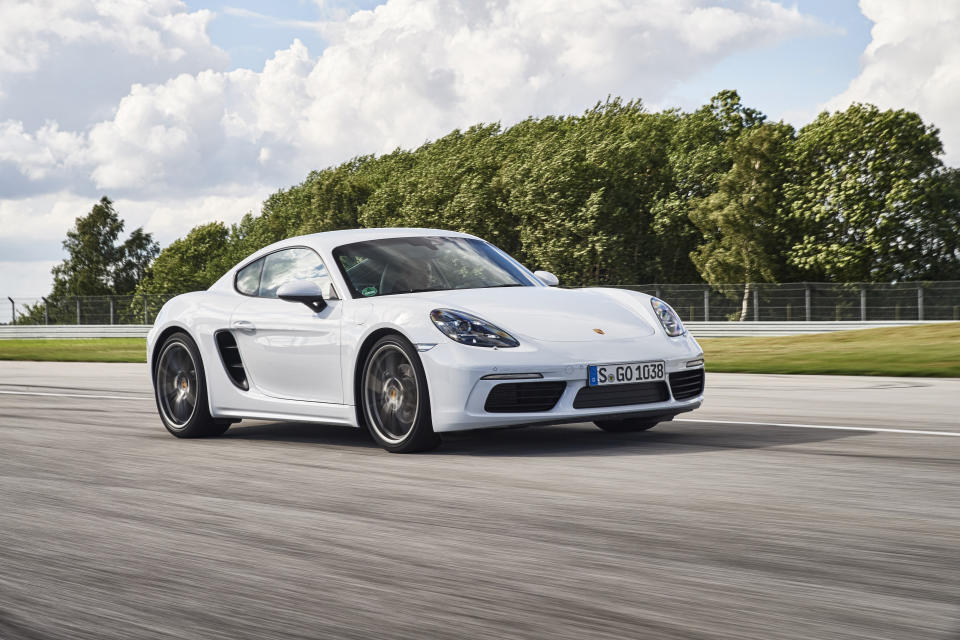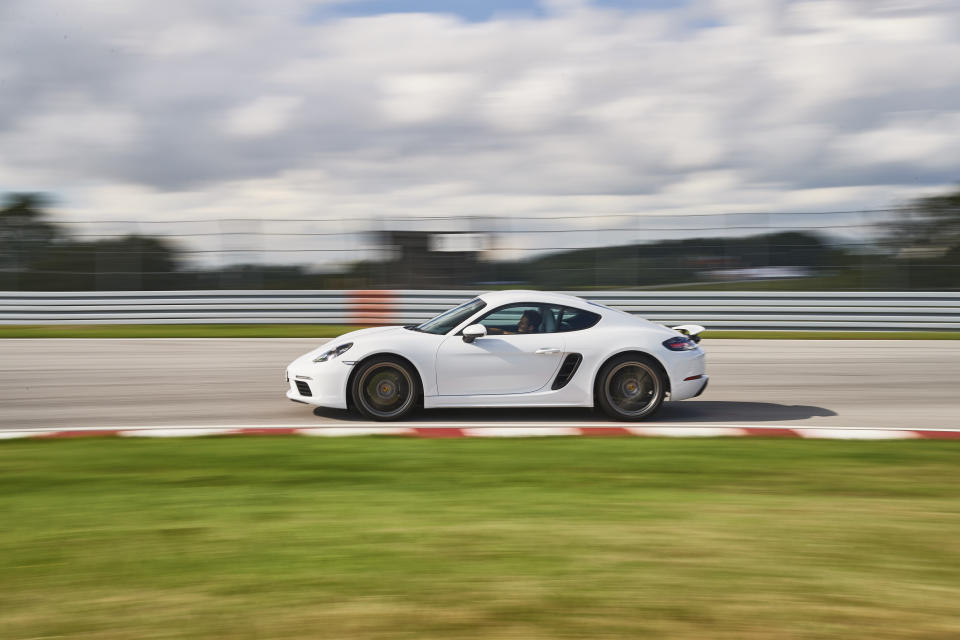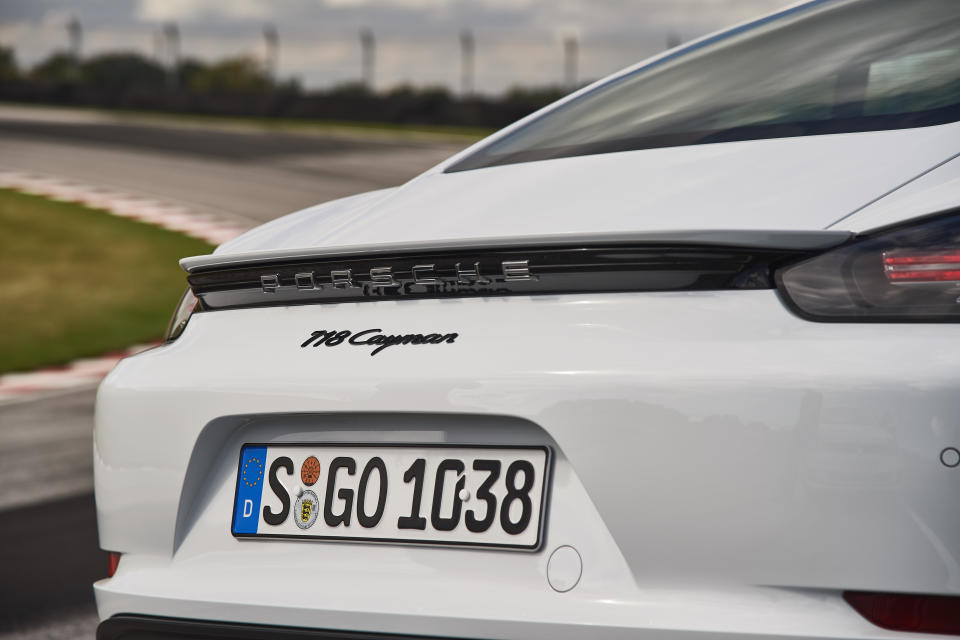Porsche 718 Cayman: First Drive

You probably know the big story for the new Porsche Cayman is the switch from naturally-aspirated flat six power to a turbocharged boxer four – that and the addition of a '718' prefix to the Cayman name to remind downsize deniers that Porsche was winning races aplenty with four-bangers like the 718RSK long before the flat six had come on the scene.
Or maybe it's that a decade on from the Cayman's first appearance Porsche has dropped the pretence that the Boxster coupe is anything other than, well, a Boxster coupe. This time Porsche has given both cars identical power outputs and flipped the pricing hierarchy to make the Cayman (at $53,900 or $66,300 for the S versus $56,000 and $68,400 for the Boxsters) the cheaper of the two for the first time. Finally, logic prevails at Porsche.
But scratch all that: the really big story, and one you probably don't know, is that for the first time since Porsche started offering two power options on its mid-engined sub 911 sports cars, you might actually not feel shortchanged with the base machine.
The entry-level Cayman 2.7 was a sweet enough car and traditionally outsells the S, but it's never had the muscle to challenge you or the chassis. Like making the pilgrimage to Oktoberfest then spending the night drinking pitchers of Budweiser, it was hard to ignore the fact that you could be enjoying something almost identical, but enjoying it a whole lot more for a few extra dollars.

But in swapping out the 2.7-liter six for a 300bhp/280lb ft 2.0 turbo four the basic Cayman gains 25bhp and – here's the transformative bit - a massive 67lb ft of torque. Zero to 60mph with the manual box now takes 4.9sec, ducking under five for the first time. Try the same in a PDK dual-clutch car with the Sport Chrono pack and you'll get there in 4.5sec, down 0.6sec.
This is like the mother of all value-packed facelifts, like going to a cosmetic surgeon for a quick bit of Botox and coming out looking a little better and suddenly able to bench 400lbs. Despite the only carryover body features being the trunklid, roof and windshield, the new Cayman looks barely different at the sharp end, and only marginally different at the back, thanks to that full-width high-gloss black accent strip between the taillights. But close your eyes (maybe just a little; lawyers present), toe the right pedal and you'd be hard pressed to believe it's the same car.
The base Cayman, a car that previously struggled to fend off a well driven hot hatch in a straight line suddenly feels strong, lusty, and like you'd want a Porsche to feel. And not just in those last couple of thousand revs when the Variocam valve trickery is doing its best VTEC impression. The 718 feels effortlessly rapid right through the rev range.
The S is still better, money no object.
Having said all that, the S is still better, money no object. If you want more speed, the S obliges courtesy of a 2.5-liter version of the same engine making 50bhp more that gets you to 60mph in 4sec in PDK/Chrono trim and down the quarter in 12.6sec, pushing you deep into your seat with less than 3000rpm on the dial and pulling hard right round to the 7500rpm cutout. But it also feels more responsive than the base car thanks to its variable geometry turbo, a feature shared with no other Porsche sports car bar the latest 911 Turbo, and one that delivers an excellent throttle response.
But why go to the trouble of building two different engines when the switch to turbo power means Porsche could build one, optimise it for the S and then detune that for the base car with a few keyboard strokes? Because extracting 350bhp for the S from the base car's 2.0 engine would have meant a bigger turbo and too much lag, says the 718's engine wizard, Marcus Baumann. And likewise a basic Cayman using a detuned version of the S's 2.5 wouldn't have hit Porsche's fuel economy targets.
The reasons for going turbo are more obvious: improved efficiency (though EPA estimates of 21/28 for the base car are actually worse due to the new rating system) and far more scope for further tuning than the naturally aspirated motors ever offered. Baumann says 400+bhp from the 2.5 is 'not easy, but very possible' further down the road.

It's hard not to focus entirely on the engine but the chassis is subtly upgraded too. Building on lessons learned from last year's Boxster Spyder and Cayman GT4, the new Cayman gets a new subframe plus a 10 percent quicker rack from the 911 Turbo up front, and to make sure that doesn't make the car twitchy, the rear rims grow 0.5in. Cars with PASM adaptive dampers – either 10mm lower, or 20mm down if you opt for PASM Sport - get the same chassis tune as the Boxster, but passive cars have a slightly more aggressive setup to capitalize on the Cayman's stiffer shell.
At the launch of the last Cayman, Walter Röhrl told me he'd pick one over a 911 on a twisty road 'every time,' and the new one is even better than the old. Better feel from the noticeably quicker electric steering, and better stopping power because the brakes are upsized to old S spec on the base car and 911-grade stuff on the new S. The way the thing pivots around its center point and lets you exploit its balance, dipping your toe into oversteer is more flattering than a retouched portrait on the cover of Cosmo. If you're going to the trouble of upspending to the S, throw in the PTV torque-vectoring differential too. It's worth every cent of the $1320 it'll cost you.
Usually we'd say the sports exhaust is a must too, but this time we're not so sure. For all Porsche has given us with its new flat fours, it doesn't sound anywhere near as good as the old car. We get it: Porsche has a history of flat fours and they make one of the most distinctive sounds in the car world. But this one makes a pretty flat, uniform noise on the journey to the limiter. There's no real crescendo, none of the hair erecting top notes you used to get with the six. Worse than that, in the Cayman it sounds boomy. A turbo'd flat six? That would have been perfect but Baumann says it wouldn't fit.

This new Cayman is a brilliant car and if we'd never driven an old Cayman, there'd be no issue. But it's a hard car to forget. Which leaves you the choice between a late model Cayman or the better driving but worse-sounding new one. Power or personality: which camp are you in?

